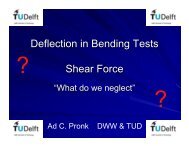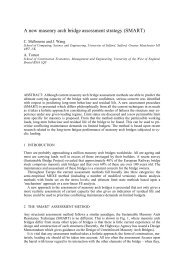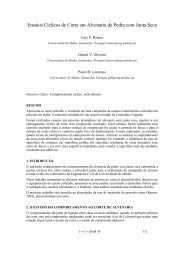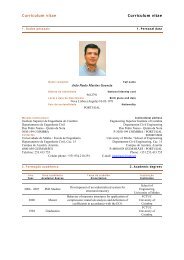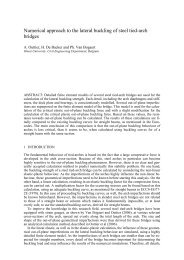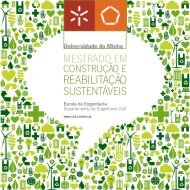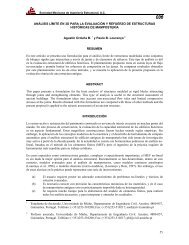Sustainable Construction A Life Cycle Approach in Engineering
Sustainable Construction A Life Cycle Approach in Engineering
Sustainable Construction A Life Cycle Approach in Engineering
You also want an ePaper? Increase the reach of your titles
YUMPU automatically turns print PDFs into web optimized ePapers that Google loves.
<strong>Life</strong> cycle <strong>in</strong>ventory of sta<strong>in</strong>less steel – A review of challenges,<br />
methods and applications<br />
B. Rossi<br />
University of Liège, Liège, Belgique barbara.rossi@ulg.ac.be<br />
ABSTRACT: This paper presents life cycle <strong>in</strong>ventories (LCI) of sta<strong>in</strong>less steel products (coldrolled<br />
coils) with a focus on the challenges associated to the use of this material <strong>in</strong> the construction<br />
doma<strong>in</strong>: roofs, façades, technical equipment, structural components.<br />
After an <strong>in</strong>troduction describ<strong>in</strong>g recent applications of sta<strong>in</strong>less steel <strong>in</strong> the construction doma<strong>in</strong>,<br />
an overview of the challenges related to the use of this material is presented. In this section,<br />
a special attention is paid to the Leadership <strong>in</strong> Environmental and Eng<strong>in</strong>eer<strong>in</strong>g Design<br />
(LEED) developed by the US Green Build<strong>in</strong>g Council (USGBC), that was one of the world’s<br />
first green build<strong>in</strong>g rat<strong>in</strong>g system (1990) and most widely used <strong>in</strong>ternationally. The most recognized<br />
European environmental assessment methods will also be mentioned.<br />
Several grades will then be described with regard to their mechanical (resistance and ductility)<br />
and physical properties (solar reflectance, thermal emittance) as well as surface f<strong>in</strong>ishes<br />
available for the construction doma<strong>in</strong>. Afterwards, three grades <strong>in</strong> the form of cold-rolled coils<br />
(grades 304, 316 and 430) will be compared <strong>in</strong> terms of life-cycle <strong>in</strong>ventory from cradle to gate<br />
<strong>in</strong>clud<strong>in</strong>g the end-of-life treatment. Indeed, s<strong>in</strong>ce sta<strong>in</strong>less steel is recycled to more than 90% at<br />
the end of its life and recyclable and <strong>in</strong>def<strong>in</strong>ite number of times, the method that will be taken<br />
<strong>in</strong>to account is referred as “allocation for scrap <strong>in</strong>puts and outputs us<strong>in</strong>g the closed material loop<br />
recycl<strong>in</strong>g methodology”. A short description of the reference method will also be provided.<br />
Last, depend<strong>in</strong>g on the recycl<strong>in</strong>g rate and thus net recycl<strong>in</strong>g content, several impacts such as<br />
the energy demand and CO 2 emissions will be compared. The <strong>in</strong>fluence of the end-of-life credit<br />
method will be underl<strong>in</strong>ed and discussed.<br />
1 INTRODUCTION<br />
Sta<strong>in</strong>less steel is perceived by the average man as a highly decorative material as well as durable,<br />
aesthetic and easily ma<strong>in</strong>ta<strong>in</strong>ed. Sta<strong>in</strong>less steel manufacturers and retailers as well as construction<br />
eng<strong>in</strong>eers and architects agree to say that this material has a great potential <strong>in</strong> the market<br />
for susta<strong>in</strong>able constructions thanks to its <strong>in</strong>tr<strong>in</strong>sic properties: mechanical properties<br />
(strength, ductility, fire resistance), not pollut<strong>in</strong>g (even if left <strong>in</strong> a rubbish dump), recyclable <strong>in</strong>def<strong>in</strong>itely,<br />
highly recovered at the end of its life, durable (thanks to the protective oxide layer)<br />
and easily ma<strong>in</strong>ta<strong>in</strong>ed, adaptable to future renovation or reconstruction or even reuse of entire<br />
parts of the construction, <strong>in</strong>terest<strong>in</strong>g physical properties such as the emittance, easily comb<strong>in</strong>ed<br />
with other construction materials (see for <strong>in</strong>stance Birat et al. 2005, Hiroyuki & Toshiyuki 2005,<br />
Baddoo 2008, Houska 2008). Moreover, due to the development of life cycle cost analysis<br />
(LCC) of structures, the adjective economic is sometimes naturally jo<strong>in</strong>ed to sta<strong>in</strong>less steel alternatives<br />
especially seen the development of ferritic grades (Rossi 2008).<br />
A lot of examples of constructions <strong>in</strong> which sta<strong>in</strong>less steel has been used for its aesthetic expression<br />
and durability exist: the Francois Mitterand Library <strong>in</strong> Paris (Arch. Dom<strong>in</strong>ique Perrault)<br />
where sta<strong>in</strong>less steel mesh where used for the <strong>in</strong>terior ceil<strong>in</strong>g, the Torre Caja <strong>in</strong> Madrid (see Fig.<br />
67


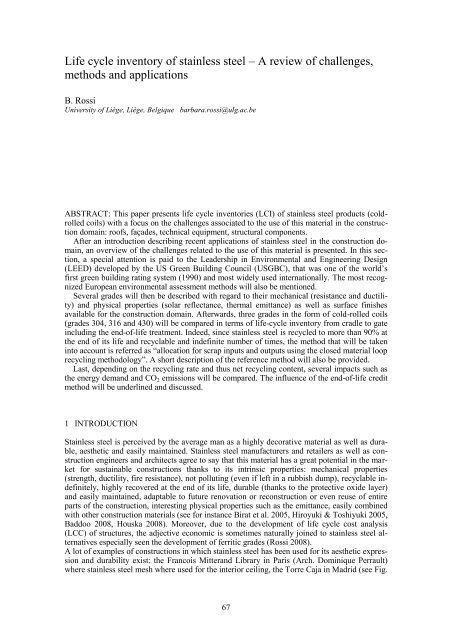
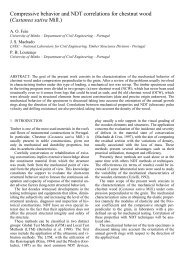
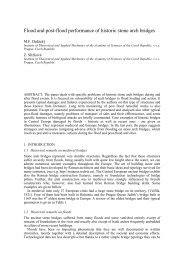
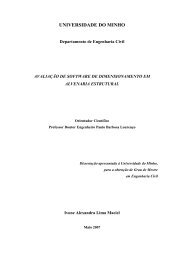
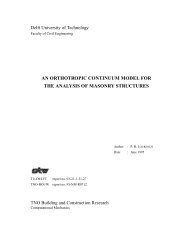

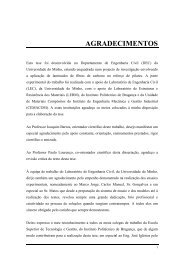

![Weibull [Compatibility Mode]](https://img.yumpu.com/48296360/1/190x134/weibull-compatibility-mode.jpg?quality=85)
